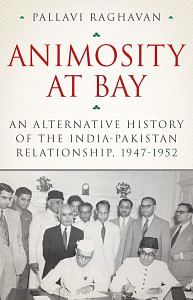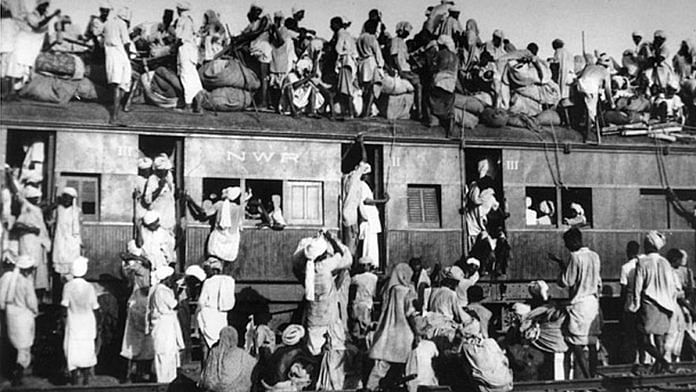Amongst the earliest actions that the Partition Council took was to establish an office of the High Commissions for India and Pakistan. In this chapter, I highlight how the administrative response to the immediate fallout of the partition was determined foremost by how it could be bilaterally handled, rather than being governed by any other consideration—including, for instance, the necessity of bringing immediate relief to the law and order situation.
I examine how the Partition Council approached the question of setting up the foreign ministries for India and Pakistan in August 1947, and the importance that was given to having a diplomatic architecture in place that could handle the interaction between India and Pakistan on issues relating to abducted women, and the Punjab Boundary Force. In many ways, notwithstanding the glaring inadequacies of the state apparatus to contain the violence around partition, what was given importance was the ability to produce a bilateral mechanism to deal with partition’s fallout.
Therefore, I look at how the process of implementing the early consequences of partition were handled through the shaping of an administrative architecture that was aimed at establishing the mutual recognition between the governments of India and Pakistan. I argue that the actions of bureaucrats and politicians engaged in preparing this architecture were determined by a variety of considerations: how best to promote their own interests within the two states, as well as a determination that the response to the partition had to be driven by two separated entities. Indeed, one of the critical priorities for both governments in the midst of the chaos and violence of the partition riots in Punjab was not tackling the question of law and order on its own terms, but rather that India and Pakistan do this separately.
Also read: Discovery of Pakistan – How Modi & Shah have dramatically re-hyphenated India with Pakistan
What mattered more was not the inadequacy of the state apparatus in either country to contain the fallout of violence across north India and Punjab for their own sake, but rather that this should also be seen to exist within a bilateral framework of action. ‘The first step,’ Mountbatten decided, on 6 June 1947, ‘should be to set up a Committee on the highest possible level which would be charged with the duty of enquiring into all matters connected with the partition.’ The immediate decisions of the Partition Council were about the final demarcation of boundaries, the division of the armed forces, division of the staff of the various branches of government, the division of assets, the jurisdiction of courts, the economic relations between the two dominions, as well as methods of deciding how domicile should be determined.
For the Partition Council, finalizing the administrative machinery for partition was just as frequently the basis of agreement rather than otherwise. H.M. Patel and Chaudhry Muhammad Ali—both of whom went on to have very successful careers over the 1960s and ’70s—were representatives on the ‘Steering Committee’ of the Partition Council, who would sort through the minutiae of dividing up assets. Chaudhry Muhammad Ali’s memoirs describe the relatively cordial functioning of the Council—he suggests that left to themselves, bureaucrats were better placed to be able to quickly work through the conflicting requests by either government. H.M. Patel, his Indian counterpart largely agreed with his assessment: indeed, he went a step further and remarked, ‘We worked against the backdrop of savage rioting and bitter political animosity. My colleague Muhammad Ali and I, nonetheless managed to clear the substantial portion of the work allocated to us. God knows how much more tension these would have been otherwise’.
Ali went on to become Prime Minister of Pakistan in 1955, and before that, was Finance Minister in 1951. Patel, for his part, became Defence Secretary in the years that followed partition, and went on to become Finance Minister under the Janata government. Neither of these officials advocated a particularly intractable approach to dealing with the other country over the issue of splitting governmental assets. But both were very clear that the partition itself, and the ensuing process of creating two new states had to be administered as fast as possible. Indeed, as we noted above, the moment of independence and partition served many uses for the elites manning the states of India and Pakistan.
When the partition plan was announced, many experienced bureaucrats decisively threw in their lot with one or the other dominion, rather than attempting to resist the changes. For some in the bureaucracy, a more tenuous set of decisions were shaped in the aftermath of partition about which state they would ‘choose’: some staying on for a period; others wanting to return after a few years. Yet for others, and particularly those who went on to have distinguished records in either government, the writing on the wall was clear. Many, in fact, chose to use the creation of the new state as a vehicle for further professional advancement.
Also read: Modi’s new citizenship law will rip open the wounds of Partition
In many ways, Ali’s and Patel’s assumptions during the Partition Council meetings are of central importance to historians of India– Pakistan relations. They were based on acknowledging the finality and validity of partition as an administrative solution, and creating frameworks for the viable co-existence of successor states, as opposed to attempting to critique this logic in the first place. The most pressing concern for this group of actors was not with the unanticipated nature of the chaos of the partition riots, or even a sense of unreality about the movement of events, but rather with putting in place methods of administration which were consonant with nature of the nation states of India and Pakistan.
At the same time, however, they also reveal a curious kind of partnership between the two states: having separated, the best chance for any hope of stable coexistence or amicability lay in first accepting the principle of separation, and then collaborating between institutions that recognized this fact. The infrastructure for the foreign policy establishments of both countries was planned during the discussions of the Partition Council, which contained within it a separate sub-committee relating to the Department of External Affairs and Commonwealth Relations.
The sub-committee—named Expert Committee IX—was instructed to make recommendations on relations between the two Dominions, and with other countries; what the diplomatic representation of the two Dominions would be abroad; on membership of international organisations; and on existing international treaties and engagements.
The Expert Committee considered the division of assets which belonged to the External Affairs and Commonwealth Relations department of the Government of India, and their holdings abroad, as well as assets which had been jointly owned by other governments in India. The exchange of high commissioners between the two new Dominions, moreover, was a task of the highest urgency. While discussing the question of relations between India and Pakistan, the Partition Council’s Expert Committee on the External Affairs department declared: in order to facilitate mutual cooperation in the solution of the numerous complicated problems that are bound to arise, at any rate in the initial period, in the course of adjustment between their relations, the committee recommend that as soon as possible after the 15th August 1947, there should be an exchange of High Commissioners between the two Dominions.
The Partition Council, moreover decided on 6 August that the two governments would give ‘reasonable assistance to the high commissioners of India and Pakistan in finding the office and residential accommodation they required.’
Also read: Modi has finished Pakistan’s ‘unfinished business’ of Partition
The discussions of the Partition Council reveal little desire to break with the structures of administration and governance of the previous decades, and represent, rather, concerted efforts to secure them within new nations. Moreover, their tone is suggestive not of individuals overwhelmed by the violent turn of events, but those of cool-headed bureaucrats making pragmatic calculations about how to secure more assets for their side. The operations of the Partition Council, therefore, are indicative of the nature of bilateral engagement: while fraught with minute disagreements, it was nonetheless necessary for both India and Pakistan to ensure the completion of its tasks, so that two viable centres of government could be established. The Council oversaw the work of a Steering Committee, which would organise the minutiae of division of the various branches of the government into the new governments of India and Pakistan.
Decisions by the Steering Committee was rarely unanimous. For example, representatives for India and Pakistan respectively at the Steering Committee of the Partition Council differed strongly with regard to the framing of the terms of reference for deciding how to divide the material assets of the Government of India. H.M. Patel had argued that the existing assets of the government, such as irrigation canals, railway lines and telegraph lines, should simply remain in place. Muhammad Ali, however, pointed out that merely the accident of geography should not have priority over an equitable distribution of assets, since ‘it was only fair that both the successor governments should in the matter of efficiency of services start on an equal a footing as possible.’
Although the Partition Council worked amicably enough, and did succeed in much of the work of the division of the government, it was also a forum for the articulation of the differences between the two governments. There were many—and some lasting—disagreements over the ways in which the partition was being implemented.
 This excerpt from Animosity at Bay: An Alternative History of the India–Pakistan Relationship, 1947–1952 by Pallavi Raghavan has been published with permission from HarperCollins India.
This excerpt from Animosity at Bay: An Alternative History of the India–Pakistan Relationship, 1947–1952 by Pallavi Raghavan has been published with permission from HarperCollins India.




With due respect, this is utter nonsense. Pakistani officials conspired to murder and genocide Hindus and Sikhs out. The Hindu and Sikh population of West Pakistan in the 1941 census was 5.3 million out of a total population of 23.3 million people.
It broke down as follows:
…. West Punjab 3.6 million out of 14.8 million total
…. Sindh 1.3 million out of 4.5 million total
…. Balochistan 73 thousand out of 856 thousand total
…. NWFP 250 thousand out of 3 million total
The 1941 census was the last one done by the British and is accurate. Pakistan ran the 1951 census onwards and faced severe accusations of undercounting Hindus and Sikhs in the 1951, 1961 and 1972 counts.
So, please spare us this nonsense about India and Pakistani relations were not poisoned. They absolutely were.